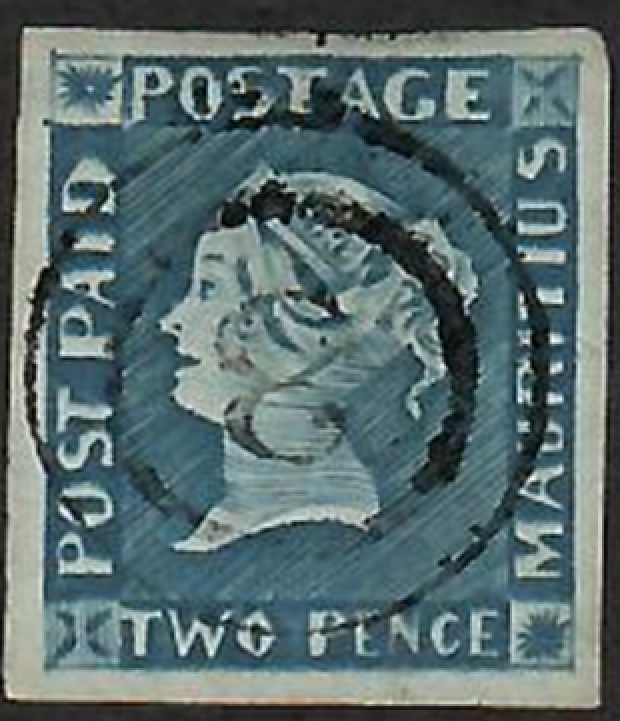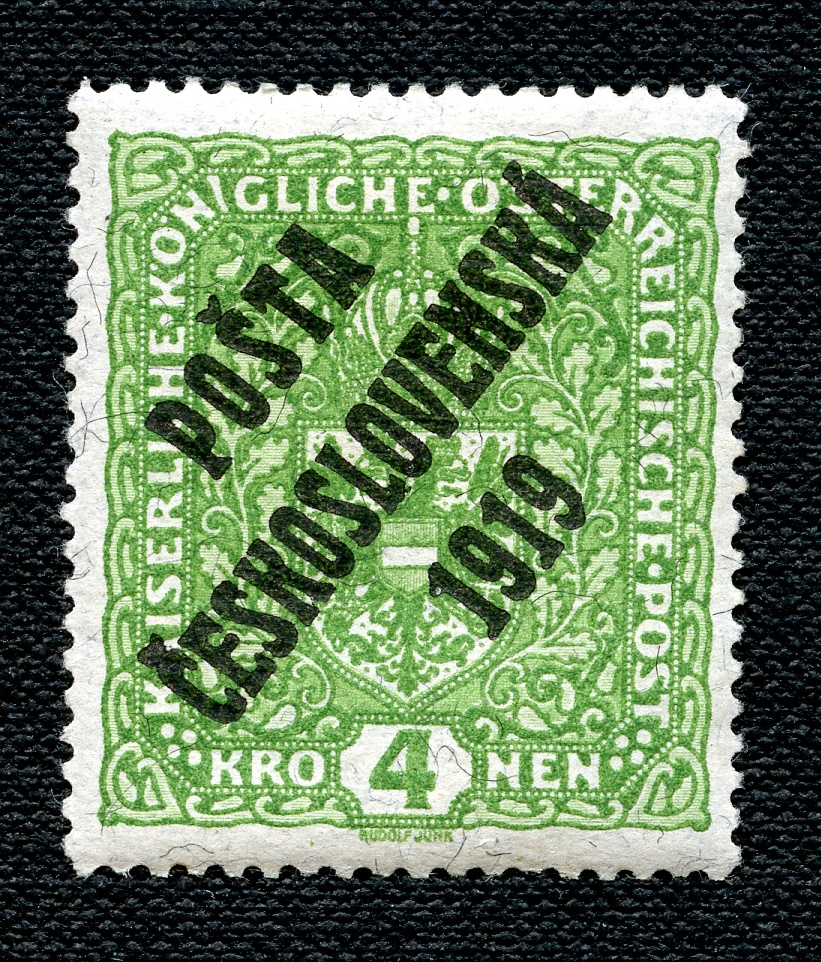Court of HONOUR
The Red Mauritius – POST OFFICE – 1847
Red Marutitius, 1 penny denomination, issued on 21 September 1847. This value was intended for franking letters sent through local transport. For example they were used for sending invitations to a celebratory ball held on 30. September 1847 by the wife of the governor of Mauritius, Lady Elisabeth Gomm, in Port Louis, the capital city of the island. Only 15 copies remain from the original print load 500 pieces. The here exhibited specimen is located in the collection of a Czech philatest from 2016.

The same as its blue sibling, the Red Mauritius is so strongly present in the minds of the wide philatelic public, that perhaps everything has been said about it and there is nothing left to add. We are of course talking about the 1847 orange-red One Penny stamp with a POST OFFICE inscription, the first ever colonial stamp in the world. Together with the blue two pence, it became a legend, because it was these two stamps that fulfilled the wonderful quality of philately – showing exactly how unattainable things can be. The first philatelists (the term philatélie was not used until 1862, when it was coined by George Herpin, a French collector) did not register the existence of POST OFFICE Mauritius stamps for nearly two decades, unlike the POST PAID emission issued in 1848. Even in 1865, when the POST OFFICE stamps were first mentioned (G. Herpin on the pages of Le Collectioneur de Timbres-Poste), J.B. Moens, a famous stamp trader and publicist, did not believe in their existence and went on to express his doubts in an open letter printed in the competing magazine Le Timbre-Poste. But by the end of the same year, Albert Coutures, a collector from Bordeaux, proved the existence of both the Red and Blue POST OFFICE Mauritius stamps by trading two common Uruguay stamps for them with Mrs Jeanne Borchard.
Mrs Borchard, who also lived in Bordeaux, found the stamps in the correspondence of her husband, who maintained commercial ties with the distant Mauritius Island. And this was just the beginning, between the years 1864 and 1869, Mme Borchard gradually found 13 out of the 27 specimens known today of this first Mauritius emission in her husband’s archives.
At first, the stamps with the POST OFFICE inscription were thought to be a printing error of the POST PAID emission.
This was refuted by J.A. Lengrad (1820-1912), an eminent collector and researcher (and also the inventor of the perforation gauge), who in 1870 was the first to distinguish and discern all 12 stamp positions and reconstruct the POST
PAID emission printing plate, thus proving, that stamps with the POST OFFICE inscription were printed from a different
printing plate and therefore originate from a different emission altogether. By examining the available specimens of the first POST OFFICE emission, Legrand realized, that all the images on the red stamps – and on the blue stamps as well – are identical. He came to the conclusion, that they were trial prints from one printing plate that accidentally got into circulation. Other authors considered the stamps to be regular issues, but thought them to be from 1858. The opinion, that they were a regular issue of much older postal stamps, was very difficult to defend, since evidence of that being so was submitted only gradually. The turning point came with the research of an avid philatelist, major E.B. Evans, who found proof on the island itself, that they truly were regularly issued stamps – the first stamps of Mauritius and on top of that the first stamps issued in colonies. Proof was hiding in the archives of the island’s governor, where Evans discovered a key document – a price estimate for the manufacturing of POST OFFICE stamps from 1847, issued by their author, the engraver J.O. Barnard.
Blue Mauritius – POST PAID – 1848
The postage stamp was engraved by Josef Osmond Barnard in the year 1848. The postage stamps were issued till the year 1859 and the printing plate was very worn out. The postage stamp was engraved on the backside of the copper plate with hotel advertisement. Printing plate contained 12 postage stamps and therefore we have 12 types.
This postage stamp is from the earliest period that is confirmed by enclosed certificate of Swiss expert. The stamp is property of the Czech philatelist.

Austiran 4-crown stamp on granite paper with the POŠTA ČESKOSLOVENSKÁ 1919 overprint
Among the numerous POŠTA ČESKOSLOVENSKÁ 1919 overprints, those nicknamed granite stand out significantly. Austrian postage stamps printed on this type of paper were marked with overprint of the new state, but they could hardly come from the original stocks of post offices in out territory. In Austria, their printing did not begin until the spring of 1919, and the way in which granite paper finally got into the Haase printing house in Prague is still the subject of an endless debate among philatelists. Equally unclear is the role that Jaroslav Lešetický himself played in the journey of these rare pieces to the pilatelic market. What is certain is that 4-crown stamps on granite paper were eventually protected from the fire of the boiler room of the main post office in Prague, where they would probably be burned in accordance with the protocol under normal circumstances. Over time, they appeared among the leading collectors and gradually gained the position among the most expensive Czechoslovak postage stamps.


